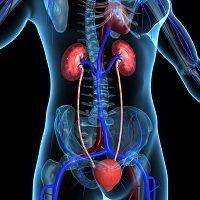Article
Good Cardioprotection Seen with Statin Plus Ezetimibe
Author(s):
Physicians caring for individuals with chronic kidney disease (CKD) must strike a balance between ensuring optimal lipid control for protection from vascular events, while avoiding undue risk.

Physicians caring for individuals with chronic kidney disease (CKD) must strike a balance between ensuring optimal lipid control for protection from vascular events, while avoiding undue risk. Prof Andrzej Wiecek, MD, Head of the Department of Nephrology, Endocrinology and Metabolic Diseases at the Medical University of Silesia, Katowice, Poland, reviewed recent recommendations and their underpinnings on November 13, 2014 at Kidney Week in Philadelphia.
Discussing the pathophysiology of dyslipidemia in patients with CKD, Wiecek noted that although for these individuals triglyceride (TG) levels are raised, low-density lipoprotein cholesterol (LDL-C) and total cholesterol may be normal to low. Some observational studies, he says, have found a clear linear relation between LDL-C levels and cardiovascular risk, while others have not.
Thus, the Study of Heart and Renal Protection (SHARP) study of heart and renal protection placed an emphasis on detecting effects on atherosclerotic outcomes of the use of statins and ezetimibe. By including coronary and non-coronary revascularization procedures and excluding hemorrhagic stroke and non-coronary cardiac death from outcomes, the investigators attempted to capture a fuller picture of atherosclerotic risk. This study design is further bolstered, said Wiecek, by two large studies that show that statin do not prevent non-coronary cardiac deaths, such as death from heart failure.
The SHARP study, which included a large number of relevant outcomes and long duration of treatment to maximize power, was able to achieve a higher number of participants reaching primary outcomes than previous studies. Inclusion criteria were wide: individuals over 40 with no history of myocardial infarction or coronary revascularization were considered for inclusion. Individuals both pre-dialysis (65%) and receiving either peritoneal dialysis or hemodialysis were included.
Approximately 9,000 patients (63% male, 23% with T2DM), ranging in age from 40 to over 70, were randomized into three arms: simvastatin + ezetimibe, simvastatin alone, or placebo. However, a safety assessment after year 1 showed ezetimibe 10 mg and simvastatin 20 mg taken once daily to be a safe combination in this population: there were no significant creatine kinase elevations, no significant increase in liver functions or incidence of hepatitis, and no increased risk of gallstones, or other signs of pancreatic compromise.
These reassuring data, together with the increased lipid lowering seen in those taking both medications, resulted in the simvastatin-only arm being dropped after one year. Those participants were re-randomized to combination therapy or placebo, and those cohorts were followed for a mean of 4.9 years. Approximately one third of patients left the study, with no difference between treatment arms. A frequent reason for discontinuation was the need for a contraindicated medication.
The simvastatin + ezetimibe combo resulted in an overall 17% reduction in the occurrence of the primary outcome measure of major atherosclerotic events and a 15% reduction in major vascular events, another prespecified primary outcome measure. Significance was reached for both outcomes. There was no difference in progression to end-stage renal disease between groups. The favorable safety profile for moderate-dose statin with ezetimibe seen at one year held true for the duration of the study.
The SHARP findings have informed the Kidney Disease Improving Global Outcomes (KDIGO) guidelines for lipid management in CKD, which recommend that adults over 50 with stage 3-5 CKD who are not on dialysis should receive either a statin or a statin in combination with ezetimibe. For patients already on dialysis, KDIGO does not recommend initiating statins or ezetimibe for lipid management.
In discussion, Wiecek emphasized that findings have important implications for clinicians, who can feel confident that beginning lipid lowering therapy early in the course of kidney disease will confer benefit without undue risk of adverse effects.




